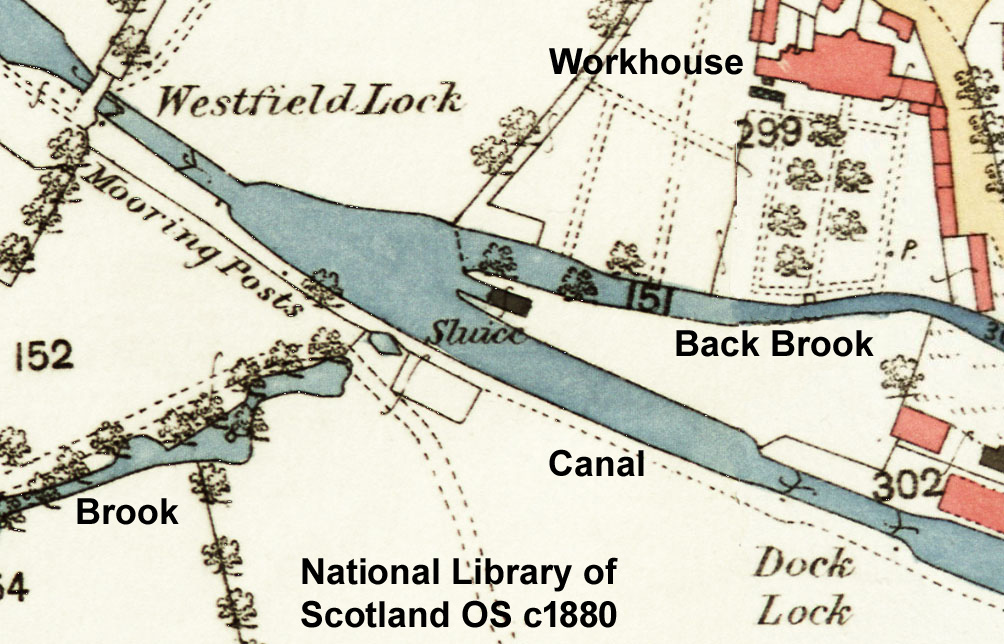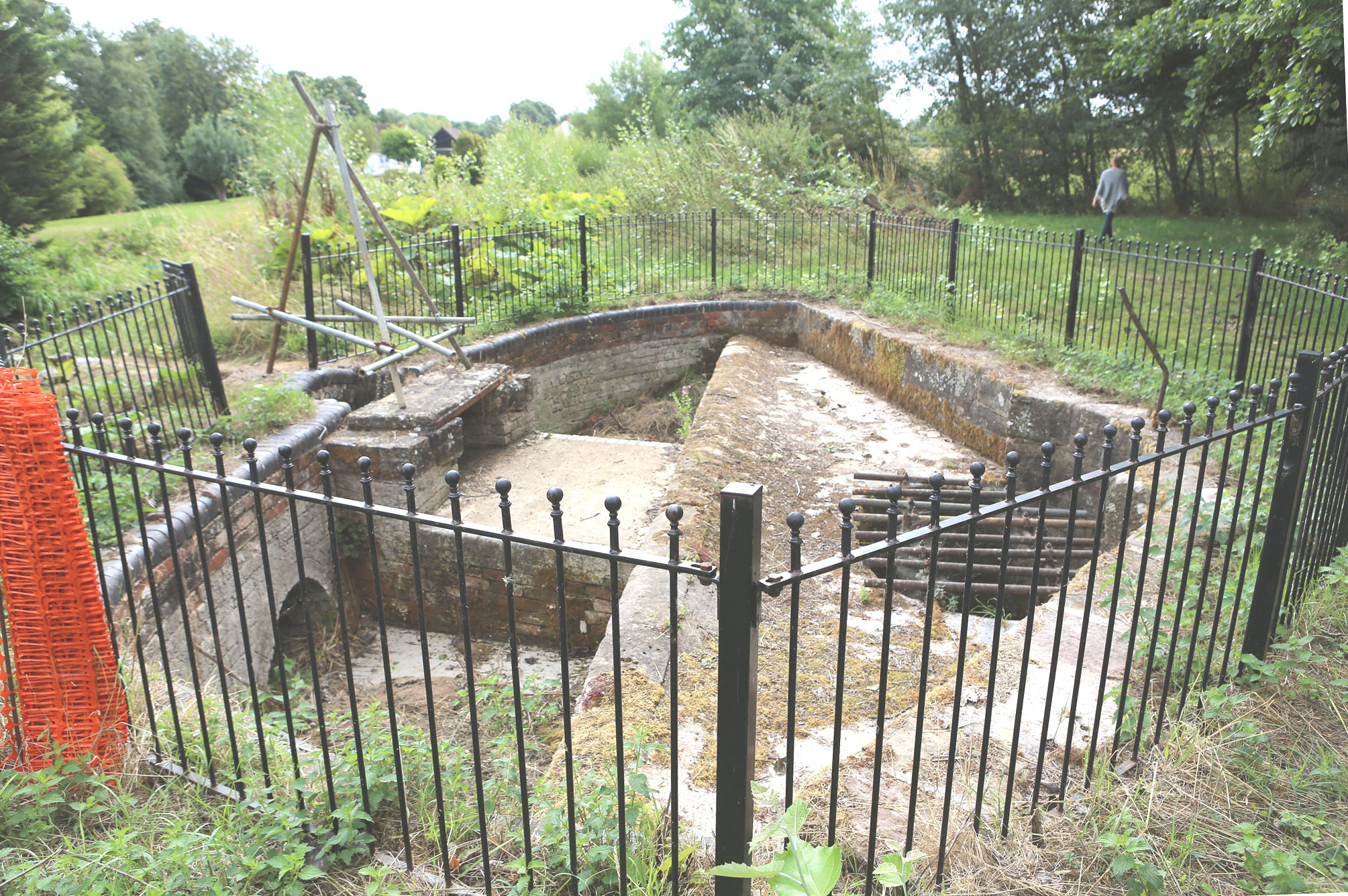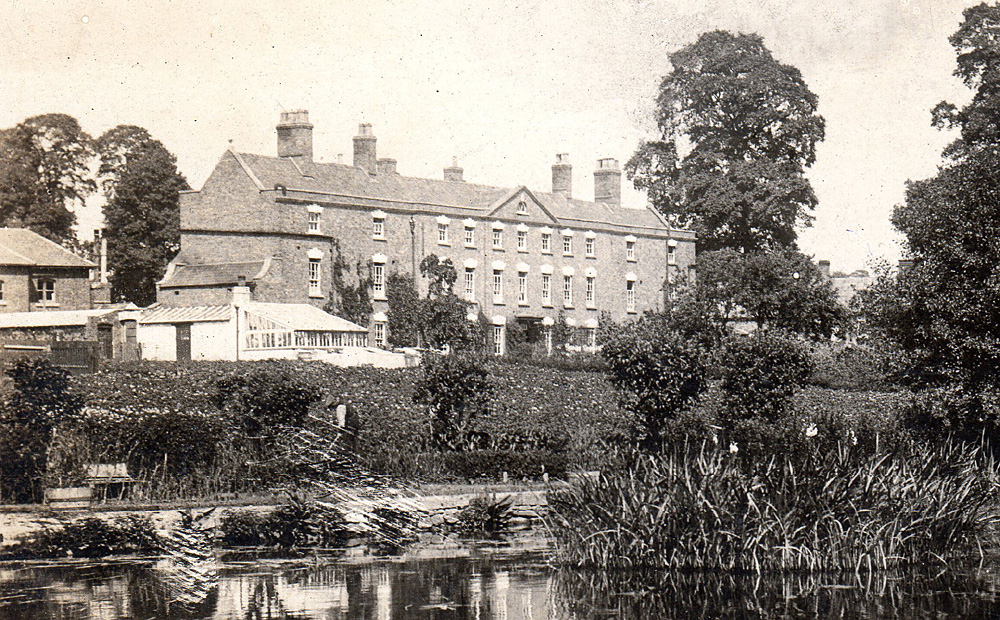The Oldbury Brook crossed the canal and flowed over a spill weir on its way to join the River Frome. (For sources, see end of page.)


Throughout the working life of the canal, the Oldbury Brook flowed into the canal to the east of Westfield lock, and most of that water continued over a large spill weir/sluice on its way to join the River Frome.
The brook was also known as the Back Brook as it gave access to the back of the Company's maintenance yard for the delivery of materials. The Back Brook became a convenient place for vessels to moor while waiting their turn to go into the dry dock or while additional repairs were completed after a visit. Unfortunately, it also became a place where vessels were abandoned, and several owners had to be threatened with penalties because their vessels were causing an obstruction or had actually sunk.


The weir has a long crest to cope with a variable flow without much change in the level of the pound. The structure includes a sluice to lower the pound for maintenance and a low level culvert to drain the pound if needed.
In the late 1980s and early 1990s, volunteers removed silt and debris that had accumulated in the structure and they repaired the stonework. They also formed an earth dam across the pound to divert the Oldbury Brook into a new channel provided at the time the M5 motorway was constructed - so the sluice under the spill weir structure now only has to take the water coming down the locks. For the current restoration project, it is planned to build a culvert to carry the Oldbury Brook under the restored canal.
Immediately east of the spill weir was a coal pen for the temporary storage of coal destined for nearby Meadow Mill or one of the other village mills. A tree-lined track still links the pen with Eastington village. During a trade depression in 1843, local mill owner Charles Hooper arranged for 200 tons of stone to be landed here. Those out of work were thus able to earn some money breaking the stone for the roads. This helped to reduce poverty at a very difficult time for the woollen cloth trade, and there were no disturbances in Eastington like those recorded elsewhere at that time. The site is now occupied by material removed from Dock Lock, including some parts of the 1924 Pike Bridge.


The Back Brook also gave vessels access to a wharf serving the district workhouse, built in the 1830s to serve a group of local parishes. Barges delivered stone to be broken up by the inhabitants for use on local roads.
In 1882, the Stroudwater manager expressed great concern when he found that a new drain into the canal came from a building that was being prepared for smallpox patients. Furthermore, part of the Back Brook had been taken up for confining ducks, and he threatened to run a boat into the structure to knock it down.
The building is now home to the William Morris Centre.
This mill on the River Frome, south-west of the coal pen, was built by 1811 to supplement the two existing mills in the village of Eastington at a prosperous time for the woollen cloth industry. Coal was delivered by canal for heating water and later for powering a beam engine. The mill continued making cloth until c1906, and then made leather-board and later fibreboard.
There is now no direct access to the mill from the coal pen, but the original tall building can be viewed from the tree-lined track running south-east to Eastington village.
For spill weir structure and restoration, see CCT Trow Archive Sep 1988 to Mar 1995.
For uses of the Back Brook, search this website for "Back Brook".
For coal pen, see Eastington Tithe Map and History of Eastington by A E Keys p110 & 93.
For concern about smallpox and ducks, see D1180/9/35.
For Meadow Mill, see British History Online vch/glos/vol10/pp131-134